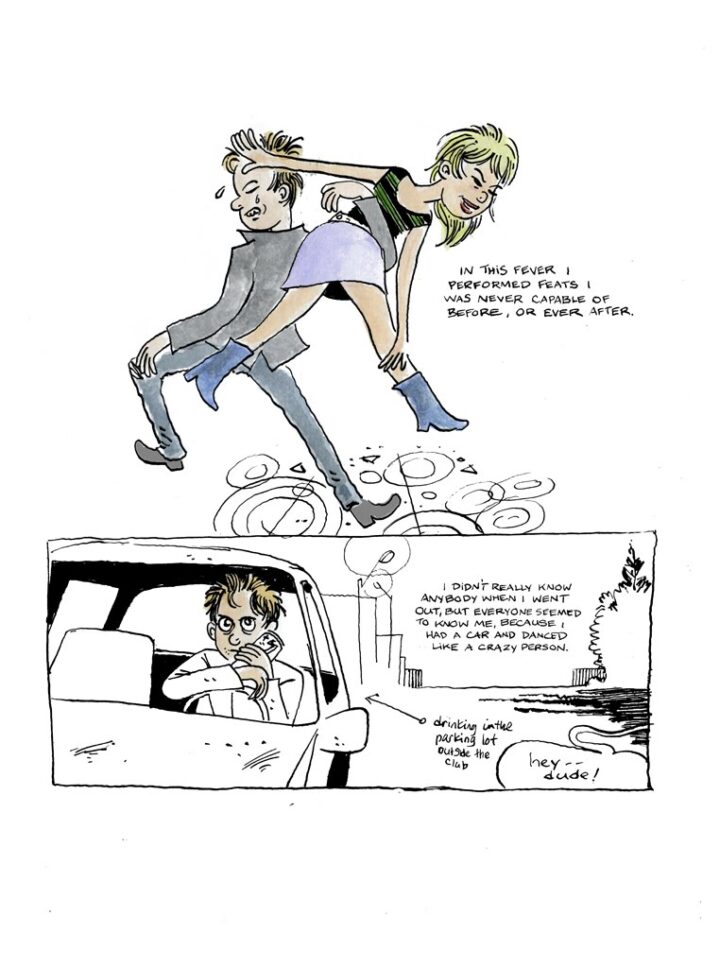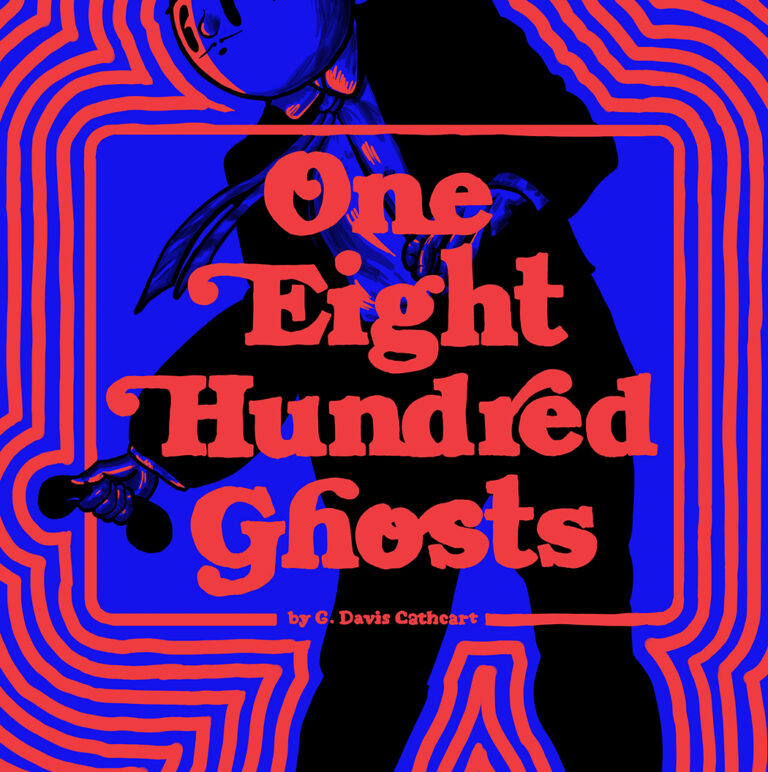Trevor Alixopulos’ line is what first drew me to his work. It has a freedom, a looseness, a vitality that I find irresistible. Sharp lines devolve into beautiful scribbles, panel borders either trail off or don’t exist, and wiry figures pulsate with energy. Backgrounds devolve into minimal, cubist renderings of cityscapes. The drawings often look dashed-off, but with a precision that can only come with years and decades of drawing comics. Every line appears exactly where it needs to be.
This approach lends itself perfectly to the milieu of Alixopulos’ new book, Lipstick Traces, a collection of “nightlife comics” that he self-published following a Kickstarter campaign this fall. That energetic line provides an undertone of vibrating intensity to even the quietest pages in these stories, and that feeling is further accentuated in the party scenes scattered throughout the book.
Lipstick Traces opens with “Dance Craze,” one of a few seemingly autobiographical stories that chronicle Alixopulos’ own experiences of parties and late night dancing. The story concludes with an apt mission statement for the book as a whole:
But real life doesn’t provide a neat finale, of easy redemption or perdition. It just eats up the past before you know that it’s gone. Turns warm bodies into shadows. I have no record of that time...just a vague notion of a time when I was held in some awe, and a curious, disassociated nostalgia, like you feel for a pop song of an era you never lived through.
This, it seems to me, is Alixopulos’ project as he has returned again and again to the theme of nightlife: to chronicle and to communicate not the substance but the feeling of attending those parties, while perhaps recognizing this as an impossible task (the title, Lipstick Traces, alludes to this idea of a hazy memory impossible to reconstruct perfectly). He jumps between autobiography and fiction, short stories and longer ones, tackling the topic from different angles and more or less overtly.
Alixopulos has a real talent for poetic prose, and that does appear occasionally here (another beautiful line from that first story: “In their bleary bemusement was a notion -- is this our lives now? Could it be our lives? Who’s to say it couldn’t."). However, he has the confidence to exercise restraint in the longer narrative pieces, allowing the poetry to sneak in only through snippets of dialogue, tiny moments, and that beautiful line. Few of these stories offer a neat narrative or a tidy conclusion; instead, they simply flow from one moment to the next and then fade away, party attendees slowly disappearing into the night before suddenly the sun is up and you realize it’s all over.
A set of recurring characters, snippets of conversations at parties, and a West Coast setting all bring Jaime Hernandez to mind, of course -- but the effect here is different, without the scaffolding that the wider Locas narrative provides for even the smallest character interactions, at least at this point in Jaime’s career. Instead, Alixopulos’ elliptical storytelling and minimal focus on narrative continuity between stories makes you feel like an attendee at these parties yourself. You see snippets from the lives of Mason, Xochitl, and the others, or maybe you hear stories about them second-hand, catching a glimpse as they dart from room to room at a house party where you stand in the corner, nursing your drink.
This, therefore, is not a collection of stories thoughtlessly thrown together--indeed, several compelling strips that you can read online do not appear here--but a considered overview of a theme that Alixopulos recognizes has attracted him throughout his career. Moreover, Lipstick Traces is also a riveting collection because it offers a broad survey of his work over time, with two older stories, “My Midnight Diary” (2005) and “Yonder” (2009), appearing alongside the more recent work that makes up the majority of the book. You can see Alixopulos refining and moving towards that shimmering, sharp linework in these earlier pieces; a lack of crispness to the lines and moments of cross-hatching betray a less confident hand (and, perhaps, a different inking implement). This, for me, makes the recent work all the more impressive.
I thought about beginning this review where I’ll now end it, with a familiar punchline: you can’t buy this book. All or most copies from the print run of 150 appear to be in the hands of Kickstarter backers, and Alixopulos has mentioned no plans for a reprint. You can find a good number of these stories individually, of course, whether online or in anthologies like Study Group and Kramers Ergot. But, as I hope I’ve illustrated here, there’s a real effect in seeing all this work in one place and printed at an indulgent 8.5x11 trim size.
I imagine you’ll read another TCJ review soon about a book you either have already read or will never see, so I shouldn’t spend too much time marveling over such a common conundrum and I shouldn’t allow publishing concerns to distract from the quality of this book. But I can’t help but ask myself questions like: did Alixopulos want this book to be self-published? Would any publisher have taken on this project, one that strikes me as a vital comic from a cartoonist doing his best work yet? Would they have printed the work in the size and format it deserves?
Still, the book is here, it exists, I got to read it -- a record of a period in Alixopulos’ life and in his cartooning career that won’t easily be eaten up by the past or fade into the shadows.









